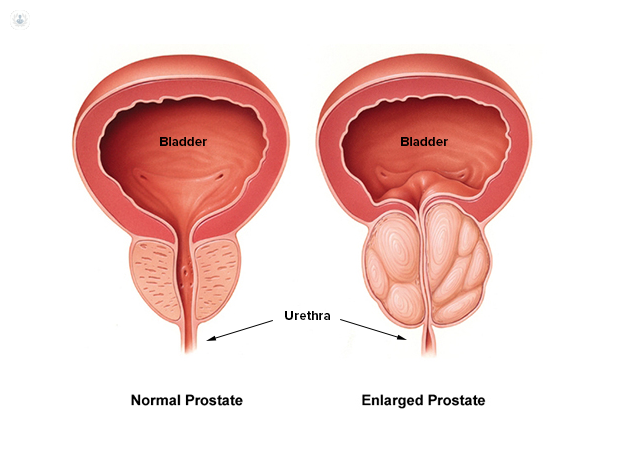Holmium laser enucleation prostate (HoLEP) how performed
Escrito por:HoLEP is the operation of choice for men with large prostates causing obstruction to their urine flow. This type of laser surgery removes blockages of urine flow without having to make any incisions on the body.
In this article, Mr Andrew Ballaro, a senior consultant urologist in North London and Essex, aims to provide you with a quick overview of this minimally invasive procedure and what you can expect both during the operation and recovery.

What is HoLEP?
Holmium laser enucleation of the prostate (HoLEP) is an operation designed to remove the overgrown inner part of the prostate that is blocking the flow of urine from the bladder. HoLEP is used to treat patients with:
- Urinary retention (unable to pass urine)
- Catheter problems
- Bothersome urinary symptoms
- Poor urinary flow
- Blood in the urine caused by large prostate

How is HoLEP performed?
HoLEP is a minimally invasive procedure that is performed from within the urethra. It is carried out under a general anaesthetic where you are unconcious or a spinal anaesthetic in which you are awake but numb from the waist down. It is typically a day case or overnight stay procedure and lasts between 60-180 minutes, depending on the size of the prostate.
During the procedure, a specialized laser beam is used to gently separate the obstructing prostate tissue from the tough outer prostate capsule - similar to removing the fruit of an orange from the inside leaving the peel. The tissue is then fragmented in the bladder and removed through the urethra leaving just the capsule. This removes the obstruction and results in a dramatically improved urine flow, and a big improvement in urinary symptoms overall.
How safe is HoLEP surgery?
Every operation carries a degree of risk, however HoLEP is the safest and most effective method of removing a very overgrown prostate. In fact, if the prostate is exceptionally large HoLEP is the only procedure recommended. Studies have shown that more tissue is removed safely during HoLEP compared to all other techniques, including transurethral resection of the prostate (TURP) and blood loss is minimal as the laser seals blood vessels instantly. Furthermore, it can even be performed for patients on blood thinners.
HoLEP has been in existence since the 1980s and is a tried and tested technique. It is approved by NICE and when performed for large prostates has been shown to result in greatly reduced length of hospital stay and complication rates compared to TURP. Furthermore, the benefit from the operation lasts longer as more prostate tissue is removed.
How long does it take to recover from HoLEP?
Most patients leave hospital the day after surgery without a catheter and are able to pass urine well. It may take a few weeks for urinary symptoms to settle down, however, patients are up and about the next day.
Most patients will require 1-2 weeks before returning to work and driving again. You should also avoid lifting heavy objects and physical straining during this time.
How much does HoLEP cost?
The cost of HoLEP varies according to which hospital you have it at, however they are similar to the costs of standard TURP. The procedure is usually fully covered by medical insurance companies.
If you are interested in this procedure, book an appointment with Mr Andrew Ballaro through to his Top Doctors profile.


